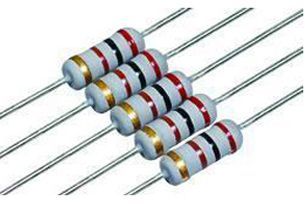Factors to Consider When Choosing Power Resistors
Applications of Power Resistors
Power resistors find applications in various fields where controlling current flow and dissipating power efficiently is crucial. Some common applications include:
1 Power Supplies
Power resistors are extensively used in power supply circuits to provide voltage regulation and current limiting. They help stabilize the output voltage and protect sensitive components from excessive current.
2 Motor Drives
In motor control systems, power resistors are employed for braking and speed control. They absorb excess energy generated during deceleration and prevent damage to the motor and associated components.
3 Amplifiers
Power resistors play a critical role in audio amplifiers, providing load resistance and impedance matching. They help ensure proper signal amplification and prevent distortion.
4 Load Banks
Load banks are used to simulate real-world loads for testing and validating power sources and electrical systems. Power resistors are key components in load banks, dissipating power and providing a controllable load.
5 HVAC Systems
Power resistors are used in heating, ventilation, and air conditioning (HVAC) systems for temperature control and regulation. They provide precise resistance to control the heating elements and maintain desired temperatures.

Factors to Consider When Choosing Power Resistors
When selecting power resistor for a specific application, several factors should be taken into account:
Power Requirements
The power handling capabilities of the resistor should align with the power requirements of the application. Choosing a resistor with insufficient power rating can lead to overheating and failure.
Voltage Rating
The voltage rating of the resistor should be higher than the maximum voltage expected in the circuit. Using a resistor with a lower voltage rating can result in breakdown or damage.
Temperature Coefficient
The temperature coefficient of the resistor should be considered to ensure that the resistance remains stable over a wide temperature range. A low-temperature coefficient is desirable to minimize the impact of temperature variations.
Mounting Options
The resistor's physical size and mounting options should be compatible with the available space and mounting requirements in the application. Different resistor types offer various mounting options such as through-hole, surface-mount, or chassis mount.
Environmental Conditions
Consider the operating environment of the application, including factors like temperature, humidity, vibration, and exposure to chemicals or contaminants. Choose a resistor that can withstand these conditions and maintain its performance.
Conclusion
Power resistors are essential components in electrical applications, providing resistance and controlling current flow. Understanding the types, characteristics, and applications of power resistors is vital for designing and maintaining efficient electronic systems. By considering factors like power rating, resistance value, tolerance, temperature coefficient, and voltage rating, one can select the right power resistor for specific requirements, ensuring optimal performance and reliability.


